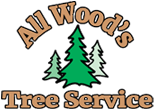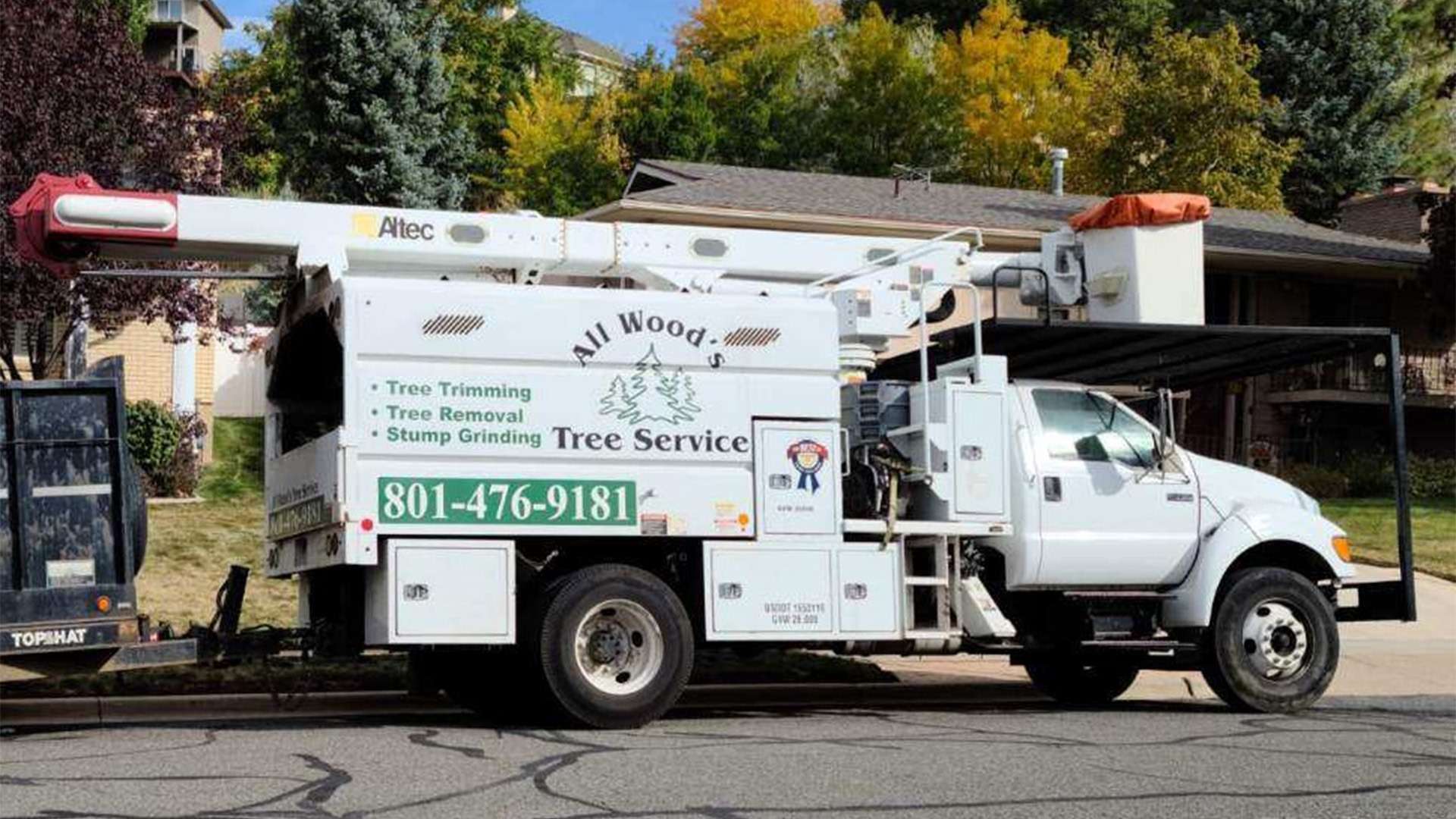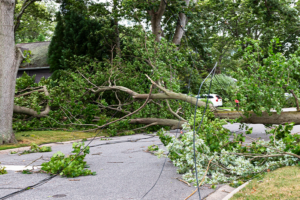When considering the well-being of the trees that enhance your property’s landscape, the decision to engage professional tree care services is crucial. These experts bring a depth of understanding in tree health and biology which far exceeds the general knowledge typically possessed by the average homeowner. This expertise is vital not only in maintaining the aesthetic appeal of your landscape but also in ensuring the safety and longevity of your trees. Professional arborists are equipped with the tools and techniques necessary to address various issues that may not be immediately apparent to the untrained eye. What’s often overlooked, however, is how these services can also mitigate potential legal and financial liabilities associated with tree maintenance.
Expert Knowledge of Tree Health
While the health of trees might appear straightforward, professional arborists possess specialized knowledge that is essential for diagnosing and treating various arboreal diseases and conditions effectively. Their expertise extends to the intricate processes of tree fertilization and foliage analysis, which are important for maintaining the safety and vitality of trees in urban and suburban landscapes.
Tree fertilization is a science that requires understanding the specific nutritional needs of different tree species. Professional arborists are trained to analyze soil conditions and root health, tailoring fertilization regimens that support robust growth and disease resistance. This proactive approach helps in preempting potential hazards that could arise from weakened trees, ensuring public safety.
Foliage analysis, on the other hand, involves examining the leaves of a tree to detect signs of distress or disease early on. This method allows arborists to identify nutrient deficiencies, environmental stress, or infestations that might not be visible to the untrained eye. Timely intervention based on a detailed foliage analysis can prevent the spread of disease and mitigate risks associated with falling branches or unstable trees, thereby safeguarding both the tree’s health and the surrounding community.
Safe Tree Pruning Techniques
Safe tree pruning techniques are essential for maintaining the health and aesthetics of trees while ensuring the safety of the arborist and the surrounding property. Utilizing the correct equipment and adhering to proven methods help mitigate risks associated with the removal of branches and limbs.
Additionally, timing the pruning process during specific seasons is critical to optimize tree recovery and growth, further enhancing the effectiveness of professional tree care.
Pruning Risks Mitigation
Implementing proper pruning techniques greatly reduces the risk of injury to both the tree and the arborist. Injury prevention is paramount in tree care, ensuring not only the safety of professionals but also of homeowners and their property.
By understanding the biology of the tree, arborists can make precise cuts that facilitate healthy growth and avoid the introduction of pests and diseases. Careful planning of the pruning process is essential to avoid accidents, such as falls or unintended damage to nearby structures.
Homeowner safety is enhanced when trained professionals handle potentially hazardous tree maintenance tasks, as they possess the knowledge to assess risks effectively and execute tasks with the utmost care, thereby safeguarding all involved parties from harm.
Essential Equipment Use
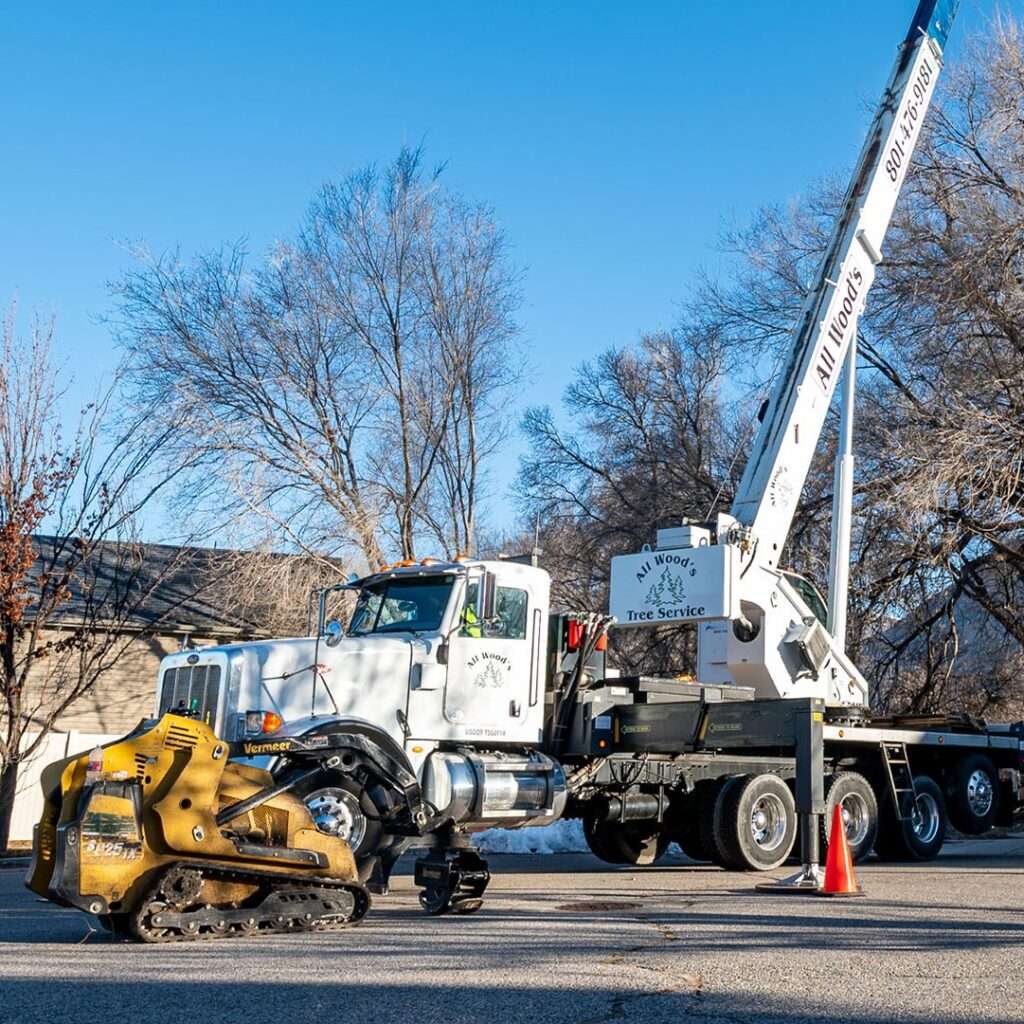
In order to guarantee the effectiveness and safety of tree pruning, professionals must utilize the appropriate equipment, including specialized pruning tools and personal protective gear. These tools are not only designed to handle the structural challenges of trees but also ensure that cuts are made precisely to promote healthy growth and disease prevention.
Equipment training is vital; it equips professionals with the necessary skills to operate advanced machinery like pole saws and hydraulic lifts safely and efficiently. Additionally, regular tool maintenance is essential to prevent malfunctions that could pose risks during operation.
Best Seasonal Timing
Understanding the best seasonal timing for tree pruning is crucial to maintaining tree health and ensuring the effectiveness of the pruning process. Seasonal growth patterns and climate considerations play significant roles in determining the most suitable times for tree maintenance. Pruning during the wrong season can harm trees, leading to poor growth or disease.
- Winter Pruning: Promotes vigorous growth in spring, as trees are dormant and can heal without stressing over active functions.
- Spring Pruning: Necessary only for corrective purposes; removing dead or damaged branches to prevent pests and diseases.
- Summer Pruning: Helps control the size and shape of the tree, and is ideal for spotting defective branches.
- Fall Pruning: Generally discouraged due to slower healing times and increased risk of fungal infections.
Correct Disease Diagnosis
Correct disease diagnosis is pivotal in professional tree care, ensuring the longevity and health of trees. Identifying common tree diseases accurately requires the expertise of trained arborists who can distinguish between similar symptoms that might affect different species.
Identifying Common Tree Diseases

Accurate diagnosis of common tree diseases is essential for effective management and care. Disease prevention and fungal identification are critical to maintaining healthy trees. Recognizing symptoms early can help in applying the appropriate treatments and safeguarding the surrounding environment.
Here are key aspects of identifying tree diseases:
- Visual Inspection: Check for unusual leaf discoloration, dieback, or growths on bark.
- Pattern Recognition: Note the pattern of symptoms—whether they appear on specific parts of the tree or are widespread.
- Seasonal Timing: Some diseases manifest in particular seasons, understanding this can guide timely intervention.
- Expert Consultation: Engaging professionals for complex disease identification ensures accurate diagnosis and effective treatment plans.
Importance of Expert Diagnosis
While identifying symptoms of tree diseases is an initial step, involving experts for a precise diagnosis is crucial to guaranteeing the right treatment and care. Professional arborists possess the necessary skills in pest identification and soil analysis, which are essential for determining the health issues affecting trees.
Misdiagnosis can lead to ineffective treatments, further weakening the trees and potentially endangering their survival. Experts utilize a combination of visual inspections and scientific testing to accurately identify pathogens or nutrient deficiencies. This informed approach ensures that interventions are not only safe but also effective, preserving the tree’s health and extending its life.
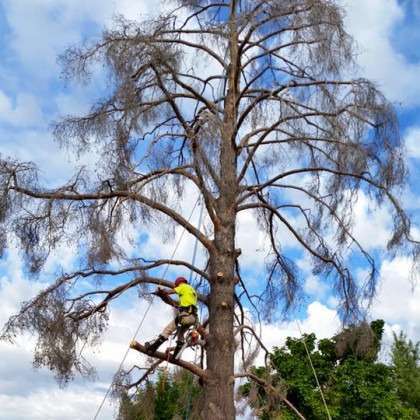
Advanced Equipment Access
Access to advanced equipment is a critical advantage offered by professional tree care services, enabling more efficient and safe handling of diverse arboricultural tasks. The incorporation of technological advancements and regular equipment upgrades guarantee that these professionals can handle complex tree care scenarios with precision. Additionally, stringent maintenance protocols ensure that the equipment is always in top-notch condition, reducing the risk of accidents and enhancing overall safety.
Engaging professional tree care services grants access to specialized equipment that most homeowners do not possess, which includes:
- High-powered chainsaws for precise cutting without damaging the tree or surrounding vegetation.
- Stump grinders that efficiently remove remnants below the soil surface, promoting a clean aesthetic and preventing pest infestation.
- Heavy-duty wood chippers for quick disposal of debris, turning large branches and trunks into mulch.
- Aerial lift trucks to safely reach high branches, ensuring that tree pruning and maintenance can be performed without endangering the workers with unstable climbing.
Efficient Tree Removal
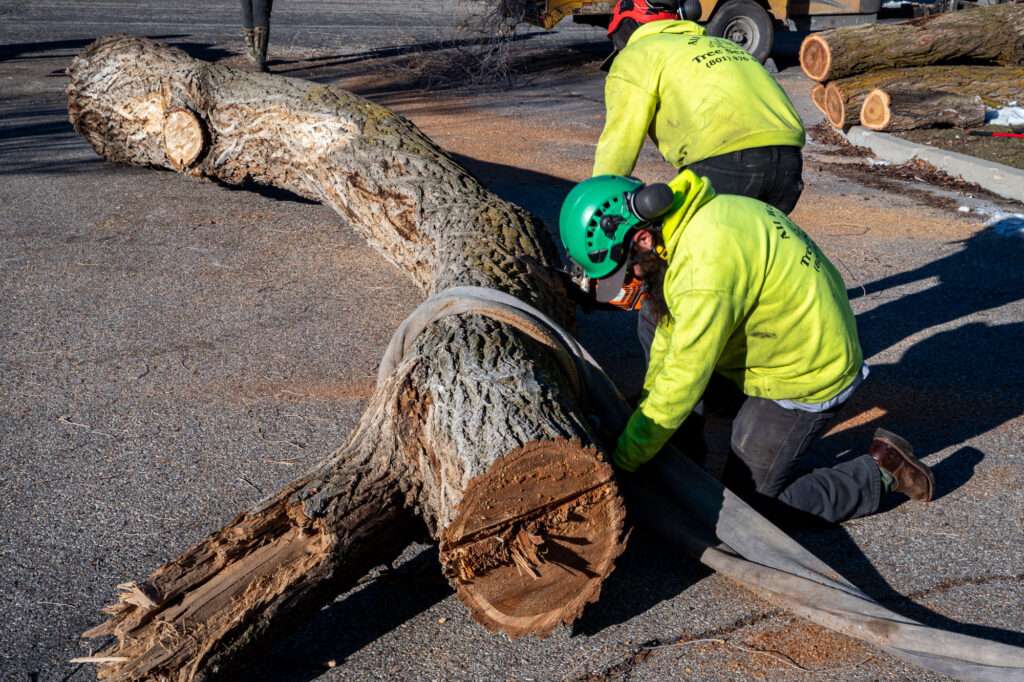
Efficient tree removal is an important service provided by professional arborists, utilizing specialized equipment and techniques to safely and quickly clear trees from properties. When trees become a hazard or obstruct development, quick action is necessary, and professionals bring the necessary expertise to manage the situation effectively.
The process starts with a thorough assessment to determine the safest method for removal, considering the tree’s size, location, and surrounding environment. Professionals use techniques such as sectional dismantling in confined spaces, ensuring minimal disruption to the property.
Once the tree is down, stump grinding is an essential service. Leftover stumps can be unsightly and hazardous, serving as tripping risks and attracting pests. Professional services include grinding down the stump to below ground level, allowing for easier landscaping and eliminating potential problems.
Debris disposal is another important aspect of efficient tree removal. Arborists make sure that all remnants of the tree are safely removed from the site, leaving it clean and clear. This includes chipping branches and making sure that all waste is disposed of in compliance with local regulations, thereby alleviating any environmental concerns.
Liability and Insurance Assurance
When engaging professional tree care services, it is important to take into account the aspect of liability and insurance assurance. These services typically offer coverage for accidents, ensuring that any property damage or injuries sustained during tree removal or maintenance are adequately addressed.
Additionally, clear professional liability policies and effective risk management strategies are essential, safeguarding both the client and the service provider from potential legal complications.
Coverage for Accidents
Professional tree care services often include extensive liability insurance and workers’ compensation to protect clients from potential financial responsibilities in the event of accidents. This coverage is vital for mitigating risks associated with tree care, which often involves hazardous tasks.
- Comprehensive Coverage: Guarantees that all activities, from tree trimming to removal, are covered under the service provider’s insurance policy, filling potential insurance gaps.
- Compensation Protocols: Clearly defined processes for compensating injuries or damages ensure quick and fair resolution.
- Financial Security: Protects the homeowner from unexpected out-of-pocket expenses.
- Peace of Mind: Knowing that the service is fully insured adds a layer of security and comfort for clients.
Professional Liability Clarity
Understanding the specifics of liability and insurance assurance is crucial for both the tree care service provider and the client to make sure all parties are clear on the extent of coverage provided. Professional tree care services typically carry thorough insurance policies that address potential insurance implications and legal responsibilities arising from their operations. This clarity ensures that in the event of accidental property damage or personal injury, the financial implications are managed appropriately.
It also delineates the boundaries of liability, protecting clients from unforeseen expenses and legal complications. Clients are advised to verify the specifics of such insurance to understand what scenarios are covered, thereby safeguarding their interests while enabling smooth professional engagement.
Risk Management Benefits
Effective risk management, particularly through liability and insurance assurance, greatly enhances the security and reliability of engaging professional tree care services.
Here are four critical points that underline the importance:
- Comprehensive Insurance Coverage: Guarantees that any damages to your property or injuries to workers are covered, thereby protecting your property value and mitigating potential financial losses.
- Professional Accountability: Professional services are liable for their actions, providing peace of mind and safeguarding your investment in your property’s landscape.
- Wildlife Protection: Experts are trained in techniques that protect wildlife habitats during tree care operations, aligning with environmental conservation principles.
- Regulatory Compliance: Adherence to local and national safety standards protects clients from legal repercussions that might arise from non-compliant practices.
Long-term Tree Preservation
Long-term tree preservation is essential to maintaining the ecological balance and enhancing the aesthetic value of landscapes. Professional tree care services play a pivotal role in guaranteeing the health and longevity of trees through meticulous growth monitoring and wildlife protection. By regularly evaluating the growth patterns and health of trees, professionals can implement strategic interventions that prevent diseases and structural problems, thereby prolonging the trees’ lives and maintaining their natural habitat for various species.
Preserving mature trees is not only about maintaining their visual appeal but also about safeguarding the broader ecosystem. Mature trees play an important role in providing shelter and food for wildlife, supporting biodiversity. Professional tree care experts are trained to manage trees in a way that balances human aesthetic needs with ecological requirements, ensuring that wildlife habitats are not disrupted by urban development or improper tree care practices.
These experts employ techniques that promote the sustainable development of younger trees, preparing them to become the mature, robust trees of the future. This approach not only guarantees the safety and beauty of our environment but also contributes to a healthier planet by maintaining ecological integrity and continuity.
Professional Risk Assessment
Why is professional risk assessment important in tree care services?
Understanding the health and structural integrity of trees on your property is essential for ensuring safety and mitigating risks. A professional risk assessment goes beyond mere observation, employing advanced techniques to evaluate potential dangers that untrained eyes might miss. This systematic approach helps in making informed decisions about tree management, thereby preventing damage to property and ensuring public safety.
Here are key reasons why professional risk assessment is significant:
- Early Detection of Problems: Identifies structural issues and diseases early, preventing potential hazards.
- Damage Evaluation: Assesses the extent of any existing damage and predicts future deterioration, aiding in proactive management.
- Legal Implications: Ensures compliance with local safety regulations, reducing the risk of legal issues related to property damage or personal injury.
- Cost Efficiency: Prevents costly emergency interventions by addressing risks early, saving money in the long term.
Customized Tree Care Plans
Building on the foundation of a thorough risk assessment, customized tree care plans are meticulously tailored to address the specific needs and conditions of each tree on your property. Such plans are essential as they guarantee that each tree receives individualized care, optimizing health and longevity. Customized plans begin with a detailed evaluation of each tree’s health, species-specific characteristics, and environmental factors.
Professional arborists use this information to schedule precise interventions, such as tree fertilization, which replenishes essential nutrients and enhances a tree’s resistance to diseases and pests. Best fertilization is determined by the tree’s species, age, soil condition, and specific health needs, ensuring that each tree gets exactly what it needs to thrive.
Growth monitoring forms another cornerstone of customized care plans. Regular monitoring by professionals helps in detecting any signs of distress or abnormal growth early. This proactive approach allows for timely adjustments in care, potentially averting severe damage or loss. Growth patterns can indicate the need for interventions like pruning, pest management, or further soil enhancements.
These tailored plans not only safeguard the health of your trees but also contribute to the overall safety of your surroundings by preventing tree-related hazards. Professional tree care services, therefore, offer a strategic and scientifically informed approach to managing the trees in your care.
Enhanced Aesthetic Appeal
Professional tree care services greatly enhance the aesthetic appeal of landscapes by maintaining the health and symmetry of trees. Expert arborists understand the pivotal role that well-manicured trees play in creating visually appealing outdoor spaces. By employing strategic pruning techniques, they not only uphold the natural beauty of trees but also guarantee that their growth patterns complement the overall landscape design. This meticulous attention to detail facilitates not just a safer environment but also one that pleases the eye and elevates property value.
- Color Coordination: Professional arborists select and maintain tree species with foliage that complements the seasonal colors of your garden, ensuring a harmonious color palette throughout the year.
- Symmetrical Trimming: Regular and precise trimming promotes symmetrical tree growth, which naturally enhances the landscape’s visual harmony and balance.
- Decorative Arrangements: Strategically placed trees can frame architectural features or create focal points in your garden, turning ordinary spaces into picturesque scenes.
- Seasonal Maintenance: Keeping trees healthy through the seasons, which involves proactive care such as mulching and disease prevention, guarantees a vibrant and attractive landscape year-round.
All Wood’s team of skilled arborists is dedicated to the health and beauty of your trees, providing expert care and innovative solutions tailored to your specific needs. With years of experience, state-of-the-art equipment, and a commitment to customer satisfaction, we guarantee safe and efficient service every time. Trust All Wood’s Tree Service to enhance your landscape, protect your property, and deliver the outstanding results you deserve. Choose us for unparalleled expertise and peace of mind.
